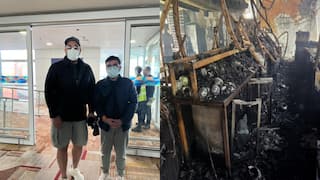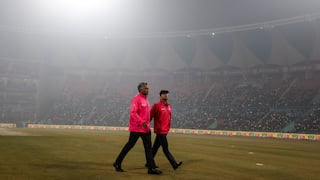ISRO Planning Abort Test Of Crew Escape System For Ambitious Gaganyaan Mission By This Month-End
ISRO is gearing up for the first inflight abort test of crew escape system (CES) of the India's maiden manned space mission, Gaganyaan by the end of October this year.

Indian Space Research Organisaton (ISRO) is planning to undertake the first inflight abort test of the crew escape system for the country's ambitious maiden human space mission Gaganyaan, by the end of this month (October). It will be conducted using a test vehicle developed as part of the Gaganyaan venture of the space agency. News agency PTI quoted the Director of Vikram Sarabhai Space Centre (VSSC), S Unnikrishnan Nair, as saying that all vehicle systems have reached Sriharikota (for the launch) and final assembly was progressing. "We are getting ready for launch by the end of October," Nair told PTI.
"(With) this crew escape system, we will demonstrate (validate) in different conditions like high dynamic pressure and for transonic conditions," Nair said adding that Thiruvananthapuram-based VSSC is the lead centre of ISRO under the Department of Space.
An ISRO official said, as quoted by PTI, that the crew escape system (CES) is the most crucial element in the Gaganyaan mission. Officials said that this month's test would be the first of four abort missions of the Gaganyaan programme. The first test will be carried out with launch of the test vehicle TV-D1. It would be followed by the second test vehicle TV-D2 mission and the first uncrewed mission of Gaganyaan (LVM3-G1), as per the news agency.
In a post on X, ISRO said the preparations for the abort test are underway. "ISRO to commence unmanned flight tests for the Gaganyaan mission. Preparations for the Flight Test Vehicle Abort Mission-1 (TV-D1), which demonstrates the performance of the Crew Escape System, are underway."
Mission Gaganyaan:
— ISRO (@isro) October 7, 2023
ISRO to commence unmanned flight tests for the Gaganyaan mission.
Preparations for the Flight Test Vehicle Abort Mission-1 (TV-D1), which demonstrates the performance of the Crew Escape System, are underway.https://t.co/HSY0qfVDEH @indiannavy #Gaganyaan pic.twitter.com/XszSDEqs7w
Next in line is the series of test vehicle missions (TV-D3 & D4) and LVM3-G2 mission with robotic payload. Officials said that the crewed mission will be planned based on the outcome of the test vehicle and the missions in which no crew is on board.
According to Nair, the test vehicle is a single-stage rocket, based on liquid propulsion, developed to validate the CES performance at different critical Mach numbers but it can be used for many purposes including space tourism.
"We are taking (the test vehicle) to transonic conditions. That means crossing the Mach number of one. We will go to something like Mach number of 1.2. That reaches around 12 km altitude. From there, the escape system will be activated, and that will go some 20 km, and from there the crew module will be released," he explained. "This vehicle can be used for space tourism, if any industry is interested. Same vehicle can take a crew module to 100 km and then come back. That's possible. If anybody is interested, this vehicle can be used for that," Nair said, as quoted by PTI.
According to ISRO, the Crew Module (CM) is habitable with an Earth-like environment in space for the crew. It is of double-walled construction consisting of a pressurised metallic inner structure and unpressurised external structure with thermal protection system. As per PTI, the model houses the crew interfaces, human-centric products, life support system, avionics and deceleration systems. It is also designed for re-entry to ensure safety of the crew during descent till touchdown.
According to ISRO officials, the Gaganyaan project would take a crew of two to three members to a circular orbit of about 400 km around the earth for a one-to-three-day mission and bring them back safely to Earth, by landing in a designated location in the Indian sea waters.
The LVM3 rocket, the heavy lift launcher of ISRO, is identified as the launch vehicle for the Gaganyaan mission. LVM3 rocket consists of solid stage, liquid stage and cryogenic stage. All systems in LVM3 are re-configured to meet human rating requirements and christened Human Rated LVM3 (HLVM3), as per PTI. Nair said the LVM3 cannot be used for conducting tests to validate CES, as it's an expensive rocket.
According to ISRO, the flight will simulate the abort condition during the ascent trajectory corresponding to a Mach number of 1.2 encountered in the Gaganyaan mission. CES with CM will be separated from the Test Vehicle at an altitude of about 17 km. It added that subsequently, the abort sequence will be executed autonomously commencing with the separation of CES and deployment of the series of parachutes, finally culminating in the safe touchdown of CM in the sea, about 10 km from the coast of Sriharikota.






































